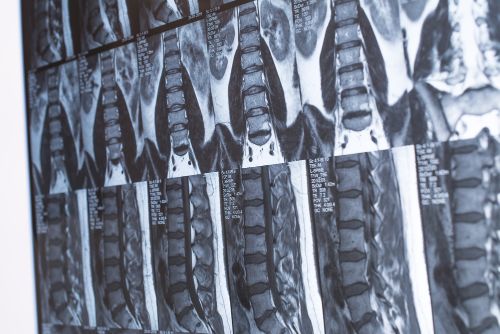Stenosis symptoms include pain, numbness or weakness in your back, neck, arms, legs or hands. They may vary from person to person and can come and go. Some people don’t have any symptoms or only have a mild case of spinal stenosis. Symptoms typically develop slowly over time and progress progressively as the narrowing of your spinal canal worsens.
Symptoms often begin with burning or tingling pain that spreads from your lower back to your buttocks, down the front of your leg and into your foot. These symptoms are also called sciatica and tend to get worse when you stand or walk. They usually go away when you sit or lean forward.
Other symptoms of stenosis can include pain and/or numbness that travels from your neck to your upper back, into your shoulder or arm. Occasionally, your cauda equina (a bundle of nerves near the bottom of the spine) may be compressed and cause problems with your bladder or bowel functions.
Treatments for stenosis can range from nonpharmaceutical to surgery. These treatments may help reduce or eliminate your symptoms so that you can function better.

Medication: Common over-the-counter medications such as acetaminophen, aspirin, and naproxen can provide temporary relief from pain and inflammation in the back and neck. Your doctor may recommend prescription medications such as ibuprofen, the anti-seizure drug gabapentin (Neurontin) and tricyclic antidepressants (such as amitriptyline).
Cold packs or hot packs: Ice packs applied to the back or neck can ease back pain and numbness caused by spinal stenosis. Heat therapy with a heating pad or a warm bath can also help relieve pain from spinal stenosis.
Physical therapy: A physical therapist can work with you to strengthen your back muscles and improve your posture to alleviate back pain and stiffness. You can work with a physical therapist online or at your doctor’s office.
Exercise: Regular exercise can strengthen your back muscles and improve your flexibility and balance. It can help you avoid re-injury to your back.
Steroid injections: Your doctor may give you steroid shots to treat pain, stiffness or numbness in your back. Getting too many steroids can weaken your bones and connective tissues, so you’ll need to limit the number of injections.
Surgery: If your pain doesn’t respond to other treatment methods, you and your doctor will decide whether surgery is necessary. Your doctor can discuss which procedure is best for your condition and recovery time.
Other medical problems: Some other conditions, such as peripheral artery disease or diabetes-related neuropathy, can mimic spinal stenosis and lead to the same types of symptoms. A doctor can diagnose spinal stenosis by performing an X-ray or other imaging test.
Congenital stenosis: Some patients have a small canal in their spine from birth. This type of stenosis is more common in women.
Spinal stenosis can be caused by osteoarthritis, rheumatoid arthritis or other conditions that damage the spinal cord or vertebrae. It can also occur if you have other spinal disorders, such as spinal tumors or herniated discs.








